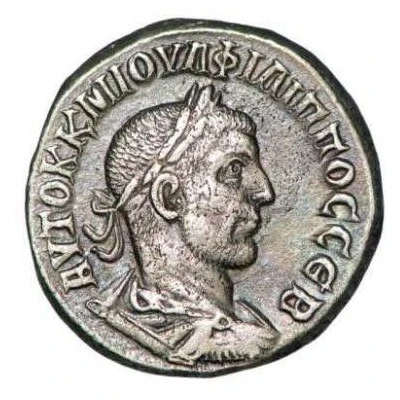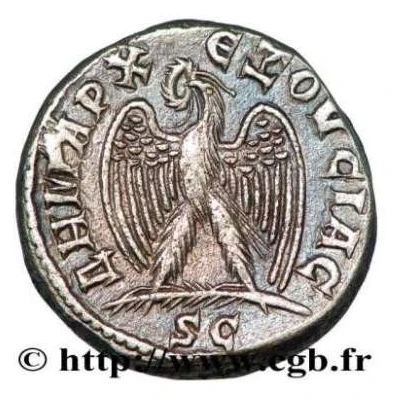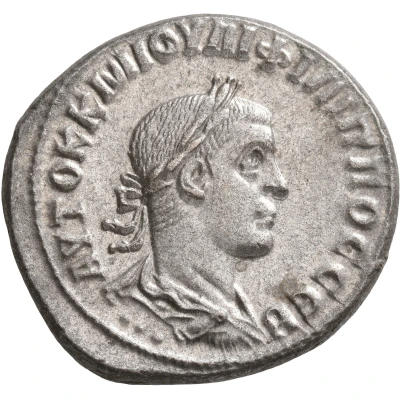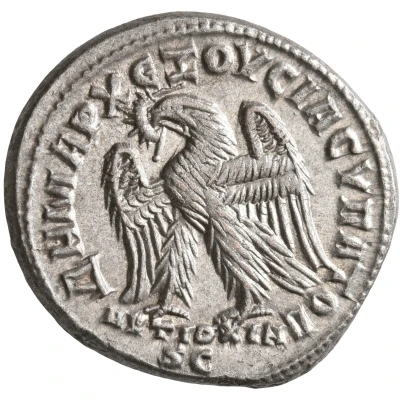Tetradrachm - Philip II as Caesar Eagle; Antioch
245 year| Billon | 14 g | 28 mm |
| Issuer | Antioch on the Orontes (Syria) |
|---|---|
| Emperor | Philip I (Marcus Iulius Philippus) (244-249) |
| Type | Standard circulation coin |
| Year | 245 |
| Value | Tetradrachm (4) |
| Currency | Drachm |
| Composition | Billon |
| Weight | 14 g |
| Diameter | 28 mm |
| Shape | Round (irregular) |
| Technique | Hammered |
| Orientation | Variable alignment ↺ |
| Demonetized | Yes |
| Updated | 2024-10-06 |
| Numista | N#385316 |
|---|---|
| Rarity index | 97% |
Reverse
Eagle standing right on palm branch, head and tail left, wings spread, wreath in its beak. SC below.
Script: Greek
Lettering:
ΔHMAΡX EΞOYCIAC YΠATO A
SC
Unabridged legend:
Demarchos exousia, Hypatos to Alpha
Senatum consultum
Translation: Invested with the Tribunician Power, Consul for the 1st time, by decree of the Senate
Comment
Example: Philip II Prieur 346
Interesting fact
The Tetradrachm coin featuring Philip II as Caesar (Eagle; Antioch) (245) from Antioch on the Orontes (Syria) was minted during a time of significant political and military change in the Roman Empire. Philip II, also known as Philip the Arab, was the Roman Emperor from 244 to 249 AD, and this coin was minted during his reign. The coin's design features an eagle on the obverse (front) side, which was a common motif on Roman coins during this period, and the reverse (back) side features a portrait of Philip II. The use of billon, a copper and silver alloy, for the coin's material was also a common practice during this time. It's worth noting that the coin's weight of 14 grams is relatively heavy for a coin of its size, which suggests that it may have been used for large transactions or as a store of value. Additionally, the fact that it was minted in Antioch on the Orontes (modern-day Antakya, Turkey) speaks to the city's importance as a center of trade and commerce during the Roman Empire.



